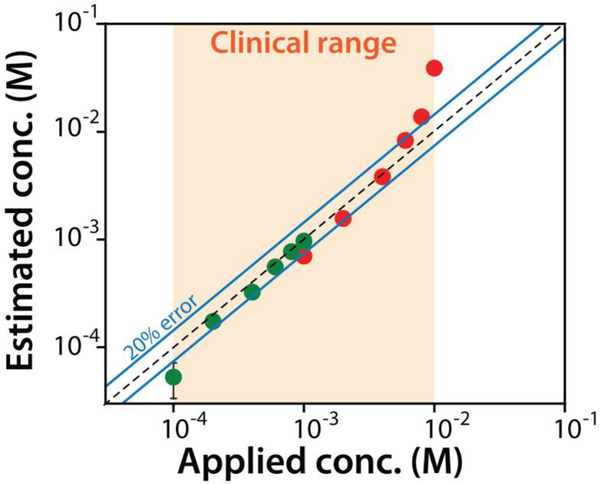Fig. 4.
The sensor exhibits clinically relevant accuracy when challenged in synthetic urine. Using two different dilution factors of 1:333 (green) and 1:100 (red) we can detect across the entire clinically relevant range of tryptophan seen for patients with metabolic disorders. Shown are the known (spiked concentration prior to dilution) versus E-AB estimated concentrations (back calculated to correct for the dilution). The data and the error bars represent the average of three independently fabricated sensors.

